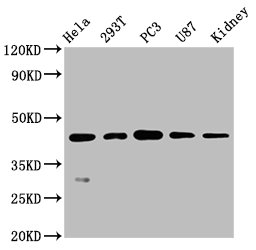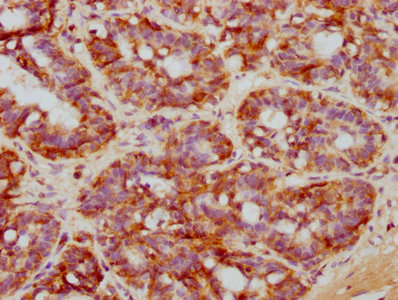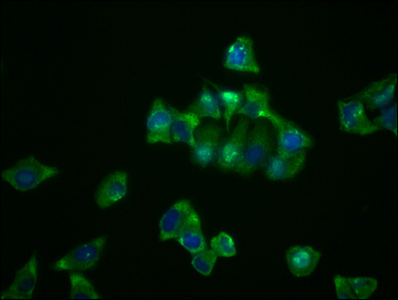The recombinant NDRG1 antibody is a monoclonal antibody made in vitro using the NDRG1 antibody genes that are typically expressed from a plasmid in a stable mammalian cell line. The genes coding for the NDRG1 antibody will ultimately assemble into a fully functional antibody after translation. The synthesized antibody is the recombinant antibody against NDRG1. It underwent purification using affinity-chromatography. This recombinant NDRG1 antibody is suitable for use in the ELISA, WB, IHC, IF to detect the NDRG1 protein from Human, Mouse.
NDRG1 as a prognostic factor in breast cancer remains controversial, as it continues to be cited as both a biomarker of negative prognosis and as a metastasis suppressor. Although its function is poorly defined, NDRG1 is a direct transcriptional target of hypoxia inducible factor 1α (Hif1α), Hif2α, and X-box binding protein 1 (XBP1). NDRG1 protein expression has been associated with high uptake of 18-fluorodeoxyglucose and estrogen receptor (ER)-negative breast cancers in vivo, but rather than a role in glycolysis, physical interactors and physiological consequences of NDRG1 malfunction suggest a poorly defined role related to lipid biology in cancer. NDRG1 is expressed in a Warburg-like metabolic gene expression program common to many solid tumors, including breast cancer. Several lines of evidence show that NDRG1 performs an important pro-survival function in regulating the fate of lipids in breast cancer cells. Increased NDRG1 expression suppresses angiogenesis via PI3K/AKT pathway in human placental cells.








